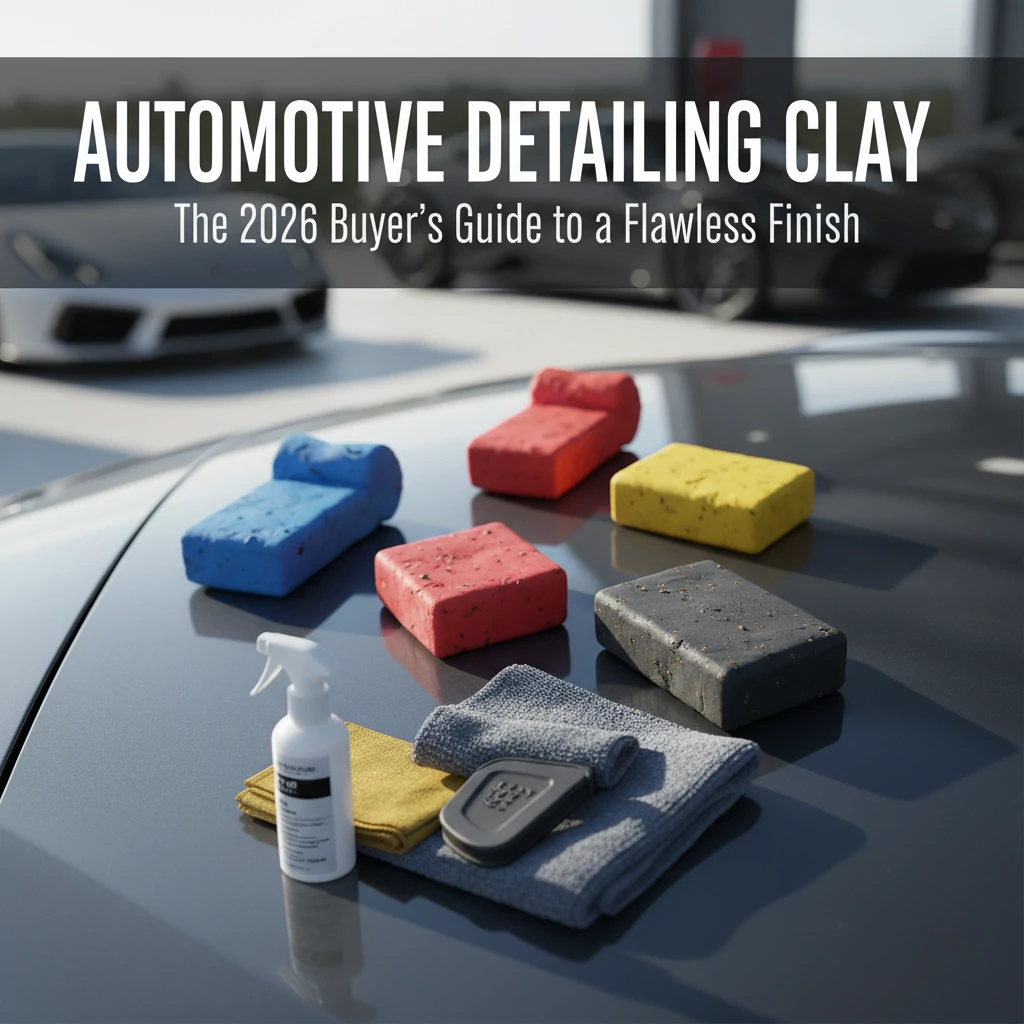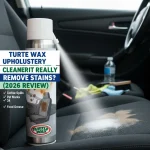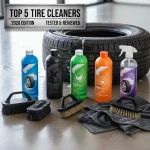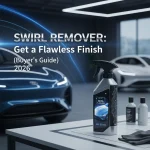[Get the best value automotive detailing clay on Amazon today!]
# Automotive Detailing Clay: The 2026 Buyer’s Guide to a Flawless Finish
Okay, so you’re aiming for that showroom shine, that head-turning gleam that makes your car look like it just rolled off the factory floor? You’re in the right place! Achieving a truly flawless finish goes beyond just washing and waxing. It requires removing embedded contaminants that cling to your paint, leaving it feeling rough and looking dull. That’s where **automotive detailing clay** comes in.
In this comprehensive 2026 buyer’s guide, we’ll dive deep into the world of detailing clay, exploring everything you need to know to choose the perfect clay bar for your needs and achieve that coveted flawless finish. We’ll cover the different types of clay, what to look for when buying, and even recommend some top products to get you started. Let’s get started!
[Browse top-rated automotive detailing clay on Amazon]
## Understanding Automotive Detailing Clay: What It Is and Why You Need It
Before we jump into the best products, let’s understand what **automotive detailing clay** actually *is* and why it’s such a crucial step in achieving a truly professional detail.
Imagine your car’s paint as a smooth surface, like glass. Now, imagine tiny particles of brake dust, industrial fallout, tree sap, and road grime embedding themselves into that surface. These contaminants are too small to see with the naked eye, but they create a rough texture and prevent wax and sealant from properly bonding to the paint. This leads to a dull finish and reduces the lifespan of your protective coatings.
**Automotive detailing clay** is a pliable, putty-like compound that gently lifts these embedded contaminants from your paint’s surface. As you glide the clay bar across the surface, it grabs onto these particles, pulling them away and leaving behind a smooth, clean surface ready for polishing and protection.
Think of it as a deep cleaning for your car’s paint – a step beyond washing that removes what washing alone can’t.
[Browse top-rated automotive detailing clay on Amazon]
## Choosing the Right Automotive Detailing Clay: A 2026 Buyer’s Guide
Not all **automotive detailing clay** is created equal. There are different types, grades, and sizes to choose from, and understanding the differences is key to selecting the right clay for your specific needs and vehicle. Here’s what to consider:
### 1. Clay Aggressiveness: Fine, Medium, or Aggressive
The aggressiveness of the clay refers to its ability to remove contaminants.
* **Fine Clay:** This is the most common type and is suitable for vehicles with light contamination or those that are regularly detailed. It’s gentle on the paint and minimizes the risk of scratching.
* **Medium Clay:** This clay is more aggressive and is designed for vehicles with moderate contamination. It’s effective at removing stubborn grime but requires more lubrication and careful technique to avoid scratching.
* **Aggressive Clay:** This is the most abrasive type and is reserved for heavily contaminated vehicles or those that have been neglected for a long time. It’s highly effective at removing embedded contaminants but carries a higher risk of scratching and should only be used by experienced detailers.
**Recommendation:** Start with fine clay unless you know your vehicle has significant contamination. You can always move up to a more aggressive clay if needed.
### 2. Clay Material: Traditional Clay vs. Synthetic Clay (Clay Mitts & Towels)
Traditionally, **automotive detailing clay** came in the form of a putty-like bar. However, in recent years, synthetic clay alternatives like clay mitts and towels have gained popularity.
* **Traditional Clay Bars:** These are the classic choice and offer excellent contaminant removal. They’re relatively inexpensive and easy to use. However, they require kneading and folding to expose a clean surface and can be dropped, requiring you to discard them.
* **Clay Mitts & Towels:** These are made of microfiber or other materials with a synthetic clay coating. They’re more durable than clay bars, easier to hold, and can be rinsed clean if dropped. However, they can be more expensive and may not be as effective at removing heavy contamination as traditional clay bars.
**Recommendation:** Clay mitts and towels are a great option for convenience and durability, but traditional clay bars offer superior contaminant removal for heavily contaminated vehicles.
### 3. Size and Shape: Bar vs. Block
**Automotive detailing clay** comes in various sizes and shapes. The most common are bars and blocks.
* **Clay Bars:** These are typically rectangular or square and are easy to grip and maneuver.
* **Clay Blocks:** These are larger and more ergonomic, making them comfortable to hold for extended periods. They’re a good option for detailing large vehicles.
**Recommendation:** Choose a size and shape that feels comfortable in your hand and allows you to easily reach all areas of your vehicle.
### 4. Lubrication: Clay Lube is Key!
Regardless of the type of **automotive detailing clay** you choose, proper lubrication is crucial to prevent scratching. Always use a dedicated clay lubricant or detail spray to keep the clay gliding smoothly across the paint’s surface. Never use water or soap as a lubricant, as they can cause the clay to stick and scratch the paint.
**Recommendation:** Invest in a high-quality clay lubricant and use it liberally.
[Browse top-rated automotive detailing clay on Amazon]
## Top Automotive Detailing Clay Picks for 2026
Now that you know what to look for, let’s dive into some of the best **automotive detailing clay** products on the market in 2026. These picks are based on performance, value, and user reviews.
### 1. Meguiar’s Smooth Surface Clay Kit
* **Best For:** Beginners and those looking for an all-in-one kit.
* **Key Features:**
* Comes with two clay bars, Quik Detailer lubricant, and a microfiber towel.
* Fine-grade clay is safe for all paint types.
* Easy to use and provides excellent results.
* **Why We Like It:** This kit is perfect for beginners because it includes everything you need to get started. The fine-grade clay is gentle on the paint, and the Quik Detailer lubricant provides excellent glide.
### 2. Chemical Guys Clay Luber and Clay Bar Kit
* **Best For:** Those looking for a high-quality clay bar and lubricant.
* **Key Features:**
* Medium-grade clay is effective at removing moderate contamination.
* Clay Luber provides excellent lubrication and prevents scratching.
* Leaves paint feeling smooth and clean.
* **Why We Like It:** The Chemical Guys kit offers a great balance of aggressiveness and safety. The medium-grade clay is effective at removing stubborn contaminants, and the Clay Luber provides excellent protection against scratching.
### 3. Mothers Speed Clay 2.0
* **Best For:** Those looking for a durable and reusable clay alternative.
* **Key Features:**
* Synthetic clay towel is more durable than traditional clay bars.
* Easy to use and can be rinsed clean if dropped.
* Covers a large surface area quickly.
* **Why We Like It:** The Mothers Speed Clay 2.0 is a convenient and durable alternative to traditional clay bars. It’s easy to use, covers a large surface area quickly, and can be rinsed clean if dropped.
### 4. Griot’s Garage Fine Surface Prep Mitt
* **Best For:** Experienced detailers seeking speed and efficiency.
* **Key Features:**
* Advanced rubber polymer technology.
* Attaches to a standard dual-action polisher.
* Significantly reduces claying time.
* **Why We Like It:** This mitt is a game-changer for detailers who want to clay quickly and efficiently. The polisher attachment ensures even pressure and consistent results. *Requires a dual-action polisher.*
[Browse top-rated automotive detailing clay on Amazon]
## How to Use Automotive Detailing Clay: A Step-by-Step Guide
Now that you’ve chosen your **automotive detailing clay**, it’s time to put it to work. Here’s a step-by-step guide to using detailing clay safely and effectively:
1. **Wash Your Vehicle:** Start by thoroughly washing your vehicle to remove loose dirt and debris.
2. **Prepare the Clay:** Knead the clay bar until it’s soft and pliable. If using a clay mitt or towel, rinse it thoroughly.
3. **Lubricate the Surface:** Spray a generous amount of clay lubricant or detail spray onto a small section of the vehicle’s paint.
4. **Glide the Clay:** Gently glide the clay bar or mitt across the lubricated surface in a back-and-forth motion. Apply light pressure and avoid pressing down too hard.
5. **Knead or Rinse:** As the clay becomes dirty, knead it to expose a clean surface. If using a clay mitt or towel, rinse it thoroughly.
6. **Wipe Clean:** After claying each section, wipe the surface clean with a microfiber towel.
7. **Repeat:** Repeat steps 3-6 until you’ve clayed the entire vehicle.
8. **Wax or Seal:** After claying, apply a wax or sealant to protect the paint and enhance its shine.
[Browse top-rated automotive detailing clay on Amazon]
## Pro Tips for Automotive Detailing Clay Success
* **Work in the Shade:** Avoid claying in direct sunlight, as this can cause the lubricant to dry too quickly.
* **Use Plenty of Lubricant:** Don’t be afraid to use a generous amount of lubricant. It’s
[Check the latest prices and deals for automotive detailing clay on Amazon today!]











